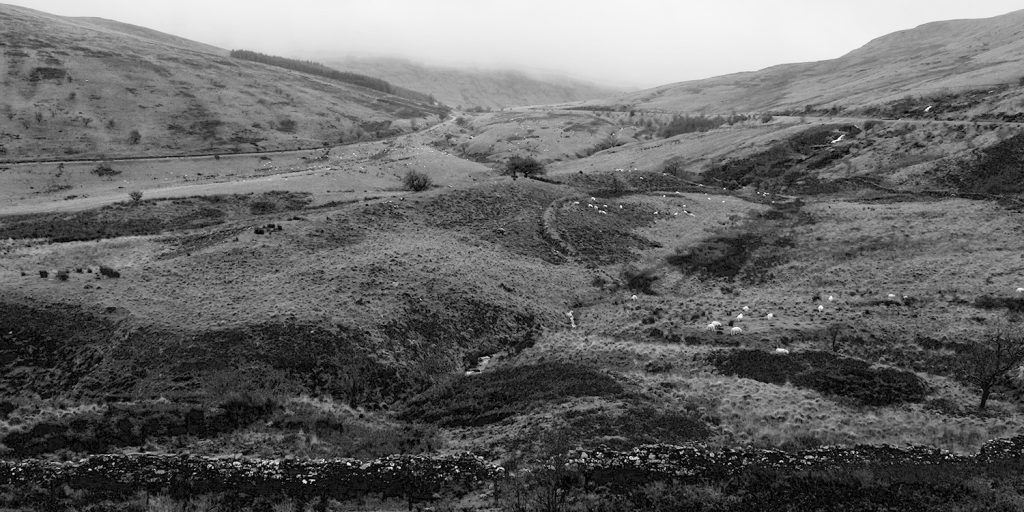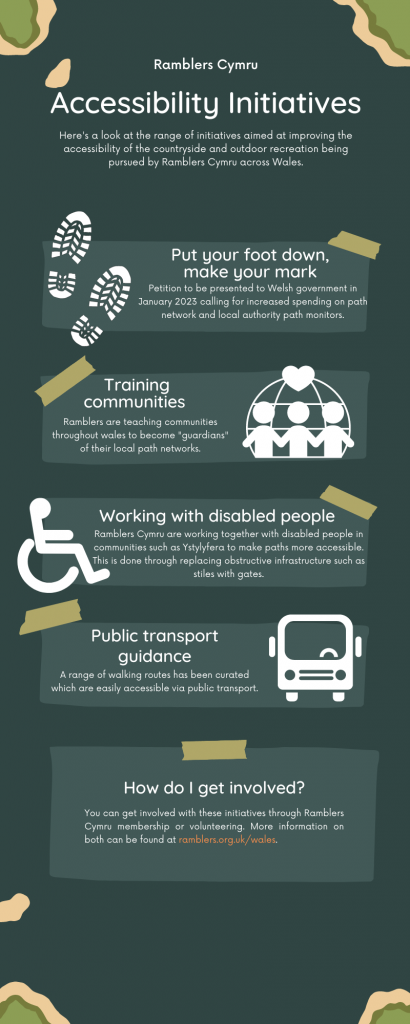Access to the countryside should be universal, but walking groups are having to step up to the challenge of protecting the national path network

Scroll through social media on any given weekend and you’ll likely see photos of all along the Welsh path network; proud faces atop Pen Y Fan, cyclists streaming down the Taff Trail and swimmers braving the icy waters of the Brecon Beacons’ many waterfalls.
Outdoor recreation has experienced something of a boom in recent years, yet many people in Wales still face barriers in trying to access and enjoy rural pursuits. From broken signage and poor surfacing to infrastructure unsuitable for disabled people, these barriers work to maintain the countryside as a privilege that not everyone can enjoy.
Beauty spot benefits
There are many benefits to our health, both physical and mental, to be found in surrounding ourselves in nature. This has been particularly apparent since the Covid-19 pandemic and lockdowns, a time when an hour of outdoor exercise felt like the only thing grounding people and keeping them sane.
A survey carried out by Natural Resources Wales concerning the use of Cardiff’s woodlands in this time found that people relied on these natural environments not only for exercise, but also for their mental wellbeing. “The ability to walk in such
wonderful surroundings helped to take some of the fear of the pandemic away.” said one respondent. “It is hard not to believe that you will survive when you walk these
woods.”
This boost to mental wellbeing is recognised by mental health charity Mind, which recommends that people spend time in nature to help with feelings of stress, self-esteem and even loneliness.
“If it’s a national asset it needs to be looked after”
Fenced off
While these effects on mental wellbeing are now widely acknowledged, less talked about are the blockages that people can face in attempting to access rural recreation, such as substandard signage, overgrown paths, and obscured access land.

One group that has garnered widespread attention in looking to change this is the Right to Roam movement, which seeks to change English Countryside Right of Way (CRoW) laws to allow public access to open land whether privately owned or not. The group held a series of organised trespasses throughout 2022 and made headlines in December as it fought a legal battle to protect wild camping on Dartmoor.
However, the group’s actions only cover England, their website stating that as CRoW legislation is devolved in Wales that it is best that the issue is dealt with separately on this side of the Severn.
Ramblers to the rescue
So step up Ramblers Cymru, the Welsh wing of the Ramblers Association, Britain’s leading walking charity. The group already have a proven track record of making land accessible; Ramblers are well known for their volunteering in path maintenance and even introduced the CRoW Act of 2000 which Right to Roam now looks to expand.
Now, they boast a range of new initiatives aimed at improving accessibility. Brân Devey of Ramblers Cymru explains how these efforts all contribute to providing the Welsh public with the means to benefit from being outside. “When we talk about mental health, about wellbeing, it’s about access to nature.” he says. “If you go for a walk on a busy concrete road, the physical and mental benefits are not the same as going for a walk in a woodland.”
This is why, in January, Ramblers Cymru will deliver a report to the Welsh government concerning the state of the path network in Wales and what they feel must be done in order to improve it. This report was made through consultation between Ramblers Cymru and communities throughout Wales and seeks to address all problems people face in trying to access wildlife. Speaking of surveying nearby areas in Torfaen and Monmouthshire, Devey says, “We were actually amazed that around half the paths weren’t easily accessible.”
To combat this, the report and its associated petition, which has gained over 1,600 signatures so far, requests that 10% of the government’s active transport budget is spent on maintenance of the path network and suggests the appointment of path monitors by local authorities. These monitors would ensure that local communities have an officer to report maintenance problems to so that paths are not so easily lost to overgrown shrubs and bad signage. In turn, Devey hopes this will force the government to take more responsibility for the network. “They call it a national asset.” he says. “If it’s a national asset it needs to be looked after”.
By doing this, Ramblers Cymru hopes that the healing power of nature can be opened up for more people in Wales. “If your first experience of going outdoors is you get lost and trip over a broken stile, it’s not likely to be an experience you’ll want to repeat.” says Devey.

Passing the baton
In the hope of inspiring everyone to take action to protect their local paths, the charity is also working with the Wildlife Trust and Coed Cadw to train local, non-Rambler affiliated volunteers so that communities feel they are “guardians for their path network”.
The next time you find yourself wasting a weekend away scrolling through social media posts of the Brecon Beacons and Pembrokeshire coast, also keep an eye out for the paths less travelled.
